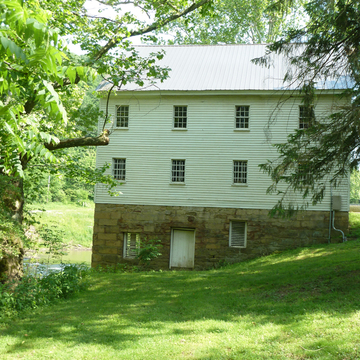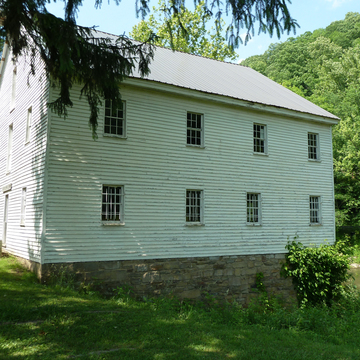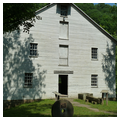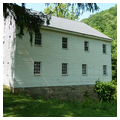In 1786 the Harrison County Court granted Edward Jackson liberty to build a mill here. After the original combination gristmill and sawmill burned, his son Cummings Jackson built the present gristmill. Cummings was uncle to Thomas Jonathan “Stonewall” Jackson, who was orphaned at age seven. The future Confederate general spent his youth at Jackson's Mill and left to accept an appointment to West Point in 1842 at age eighteen. The mill operated until 1892 but was in disrepair when the state acquired it in 1921.
The frame building stands on a tall stone foundation and basement. The side walls, arranged into four bays, are 41 feet long. The three-bay front and rear walls are only slightly shorter, and the broad gable that covers them is expansive enough to accommodate two half stories. Structural timbers, of poplar, are mostly original, but some of the siding was replaced in 1921. New flooring has since been installed, and a shingle roof dates from 1956.
The interior contains a grand collection of early machines and tools, including mill hoppers, a McCormick reaper, and an up-and-down saw mill. For a number of years, there were hopes that the mill could be made operational again, but a 1980s study concluded that the structure was too fragile to support the necessary machinery and withstand its attendant vibrations. Consequently, Blaker's Mill (next entry) was reconstructed nearby.






